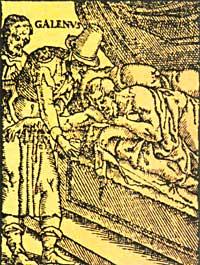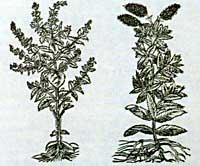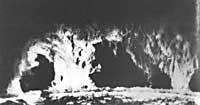History of Science: Medicine and Astronomy in Rome
Medicine
The first Greek medical school was installed in Rome. It appeared around year 14. The best doctor of the time was Celsus. In Latin he wrote a paper on medicine and surgery. This work is the most abundant source of the current history of medicine in Alexandria and Rome. Numerous surgical interventions have been developed and some of the techniques used can be considered truly modern. Celsus' work was lost in the Middle Ages, but after finding it in the Renaissance it had a great influence.

In the mid-1st century Dioskoride wrote a work on botany and pharmacy. In this work he shows us some of the peculiarities of plants and their medical values. This man was a botanist and a military doctor. In the following century, Greek medicine reached its peak due to the development of established schools in Alexandria, Rome, etc. Through all these schools, from Hippocrates and continuing the thread, we can reach Galenogán, the most cited doctor in the world at that time.
Galen, in the town of Pergamo in Asia Minor. He was born in 129 and until 200 worked in Rome and other cities. Greek knowledge of medicine and anatomy systematized and unified the different schools distributed. In animals, and in some cases in humans, he used dissection and discovered many new things in anatomy, physiology, pathology and therapeutics. They also experimented with live animals, researching the functioning of the heart and developing studies on the spine. He defended the thesis of what God determined everything in the field of philosophy and thought that the body structure was built by God for a comprehensive purpose.
Against the mechanistic ideas of atomists and their followers, Galen based his medical theory on the belief that all parts of the body were filled with spirits of different kinds. These spirits of Galen (pneum psujico) translated into Latin spiritus animalis and their belief continued for years. Galen's medicine prevailed for fifteen centuries, and perhaps the reason for this duration should be sought in his theistic vision, because for this reason his theory obtained the help of both Christians and Mohammedans.
The general theory about his bodily functions put it until Harvey discovered blood circulation. According to Galen, the blood of food is made in the liver and then mixed with spiritus animalis gets special properties. Part of this blood goes from the vein to the body and then from the same tube to the heart through a movement of flow and reflux.
The other part of the blood moves from the right to the left of the heart through the invisible pores of the septut and is confused with the air brought here to the lungs. With the heat of the heart, this blood is loaded with the spiritus vitalis and this better part of the blood reaches from the arteries to the organs of the body, making possible its functioning. This vital blood produces spiritus animalis in the brain. These, without blending in pure form and without mixing with the blood, circulate through the nerves to perform the movements of the body and the highest functions.

This description, as we know it today, is not very close to reality, but it is quite good considering the degree of knowledge of the time of Galen. Unfortunately, for years men gave more importance to Galen's own theory than to his spirit of research freedom, and his shadow, until Harvey's arrival, closed the way to physiology.
Astronomy
Another great man to mention in this second century is Ptolemy. Apparently Egypton was born, but at that time Egypto was only a Roman land. From the second half of the first century to the second. It reached the 19th century. His work is known as Almagest, but its original Greek name means synthesis of mathematics, because although it actually refers to astronomy, at that time it was a branch of mathematics. The influence of this work continued steadily for fourteen centuries, until Copernicus demonstrated the error of geocentricity (1543).
Ptolemy's astronomy is based on both his observations and the Greek and Babylonian tradition. It is divided into thirteen books. In the first two, astronomical proposals and mathematical methods are presented as an introduction. Ptolemy, after demonstrating that the Earth was spherical, used trigonometry, since he realized that spherical geometry and graphic methods were not enough. It occupied the angular distances used on the sphere. For this he divided the circumference into 360 degrees and according to Almageston (I, 10) he used sexagesimal numbers to overcome the difficulty of fractions. Thus, once a table of ropes was constructed, he calculated by a geometric reasoning the relations between Ecuador, the horizon of the Ecliptic and the meridians, as well as the corresponding tables.
In his third book he deals with the day of the year and the movement of the Sun. In the fourth he studies the duration of the month and the theory of the Moon. In the fifth he carries the astrolabe and, following the theory of the Moon, calculates the dimensions of the Moon and the Earth of the Sun. In the sixth he studies the eclipses of Sun and Moon. In the seventh and eighth stars and accuracy of equinoxes. From the ninth to the tenth theme will be the movements of the planets.
In Almageston is what in the history of science has been known as the Ptolomean system. According to this system, the Earth is still in the center of the solar system and the rest of the celestial bodies circulate around it. Among them is the oldest stellar strip of Almageston. In him there are a thousand twenty-eight stars with their lengths, latitudes and magnitudes.
After writing Almagest, Ptolemy did a Geography. It is divided into eight books. In this work, in addition to providing mathematical information, it shows what you need to build maps. To write his work he used works by Eratosthenes, Hiparko, Strabo and, above all, Marino de Tiro.

Ptolemy is credited with two works on optics. The first, called Ptolomei de speculis in Latin and the other, which was preserved in Arabic, and the Optics translated into Latin in 1154. But the fact that this second work has been done by him is in doubt.
The sunset of Roman science
From the second century onwards there is a notable decline in science. The cause of this decline seems to be twofold: on the one hand, ideological and spiritual change and on the other, political and ethnic change. According to Sarton: Throughout the Hellenistic era, three types of popular religions were developed, the first of them from ancient Greek paganism, the second from Judaism and the third from Eastern mysteries and cultures such as the cults of Mitra, Zibeles and Atis, Isis and Osiris. But the appearance of a new and incomprehensible mystery, that of Jesus Christ, and his gradual growth, brings with it a whole new stage.
The rationalist effort made by the Greek people made the scientific spirit believe, but this succumbed to belief. The Roman era, in some way, gave its support to this event, because due to urgency, science was granted to technique or application, which caused a break in the development of thought. This cut results in illuminism.
Without lips, with the beginning of the Christian era, the irrational forces breathed a lot. The old rational methods collapsed and fislosophic dogmatism appeared before them. In this way, the reason for the expression of the world and its essence were analyzed only from the mystical side.
Therefore, II. and III. For centuries, in most sciences, especially in medicine and astronomy, a dangerous cross between the scientific and the mystical religious began, although mathematics seemed to be beyond that risk. But this also fell into the void in the IV-V centuries and with it all science. That is, he abandoned the honored tradition of Greek science leaving way for the new mentality.
However, III. Here we have to mention the case of Diofanto, who lived in the second half of the twentieth century. This Greek scientist was from Alexandria and there is no doubt that he was the best ancient mathematician on algebra. Before diophanth, algebraic problems, geometry and spoken reasoning were solved. He therefore introduced abbreviations to express quantities and repetitive operations, so that he could create and solve equations. He could also calculate the square of the binomial. We must see Diofanto as an island of its time.
The anti-rationalist trend was introduced in the field of mathematics by the hand of astrology. Neoplatonism and neopitagorism, especially, gave philosophical support to this incorporation.
Plotinus (d.C.) 204-269) wrote the book entitled Astroen eragin ez izan. Ptolemy, which we have seen in the last century, together with his absolutely scientific works, made his Opus quadripartitum. It analyzed the confusion between celestial phenomena and human phenomena. But now one more step is taken: under each physical phenomenon neoplatonism seeks to find a symbolic and spiritual meaning; it believes in the existence of a mystical meaning in mathematics itself.

Porphyry and Teon of Alexandria wrote astrological comments about Ptolemy's Almagest. In the same line is the one made by Hipatia to Diofanto.
At the same time Prokoko (411-485), in his quotation to Euclid, wants to find a mystical meaning to his geometry. However, Proklo is of strict intelligence and somehow scientific. In the proclamation the different aspects of a decline and a transition are blended darkly: abstract capacity, thirst for knowledge and beliefs, mysticism, cultured belief and agitation. Proklo, in short, is a descendant of Greek thought, but being a son of his time, he is not able to enjoy the treasure he has. It closes one of the most prestigious stages in the history of scientific-philosophical thought. But at the same time a new important era opens up: The era of Christianity.





